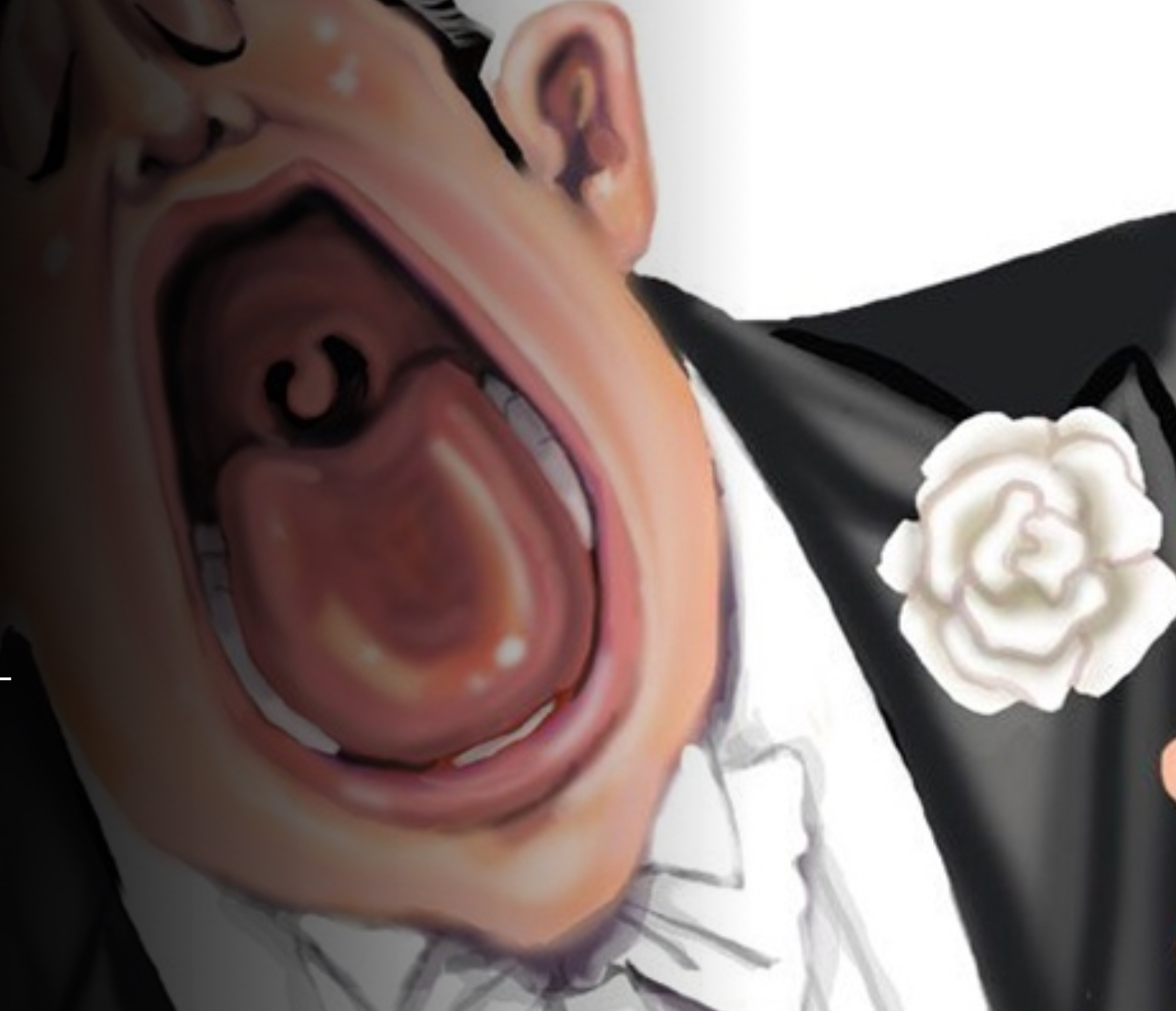COMPS - Phonation
1/21
Earn XP
Description and Tags
Describe the structure and function of the vocal instrument. Describe one complete vibratory cycle, assuming that it is the onset of phonation.
Name | Mastery | Learn | Test | Matching | Spaced |
|---|
No study sessions yet.
22 Terms
Comps question: Describe the structure and function of the vocal instrument. Describe one complete vibratory cycle, assuming that it is the onset of phonation.
Laryngeal anatomy first, then let’s use it to answer the question.
What is the hyoid bone?
suspends from the muscles above it (jaw, tongue, upper neck muscles)
because of this, jaw and tongue tension directly affect it
only bone in the human body that is NOT connected to another bone
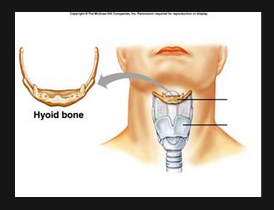
What is the thyroid cartilage? Describe its elements.
shaped like a shield
protects the larynx anteriorly
thyroid notch aka. adam’s apple (behind it lies the anterior commissure where the vocal folds are originated)
has superior (upper) and inferior (lower) horns with connections to different parts of the larynx (super connects to hyoid bone; inferior connects to the cricoid cartilage)
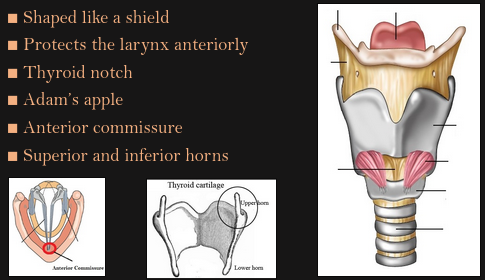
What is the cricoid cartilage? Describe its elements.
shaped like a class ring (thinner on anterior side and thicker in the back)
attached to the inferior horn of the thyroid cart.
sinovial joint allows the thyroid cart to rock and tilt above it (which is very important for chest vs. head voice)
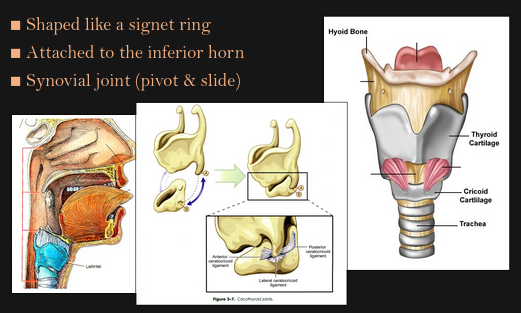
What are the arytenoid cartilages? Describe their elements.
two pyramid shaped cartilages
sit on top of the posterior side of the cricoid cartilage
each vocal fold inserts into an arytenoid cartilage
the arytenoids are TOGETHER when the vocal folds are vibrating (remember the hand thing, with the thumbs?)
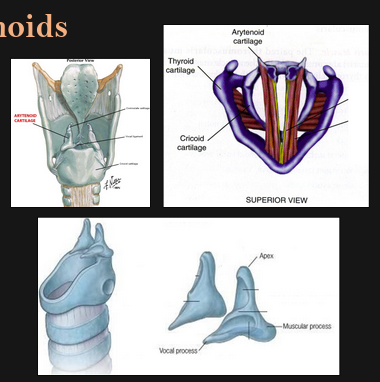
What is the epiglottis?
leaf shaped cartilage
tilts over and blocks the airway when we swallow
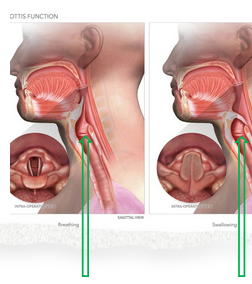
Let’s talk vocal folds. What are their three (or five) layers? (from surface level to deepest)
(from surface level to deepest)
epithelium (aka. mucosa)
lamina propria
superficial layer
intermediate layer
deep layer
body (the thyroarytenoid muscle)
also, the vocal ligament — passes through the intermediate layer of the lamina propria

MUSCLES TIME. What are the thyroarytenoid muscles (TA)?
originate at the thyroid notch (anterior commissure)
insert into arytenoid cartilages
when contracted: pulls arytenoids forward, shortens and thickens vocal folds

What are the cricothyroid muscles (CT)?
when contracted, they rock the thyroid cartilage forward
this elongates and thins the vocal folds; pitch goes UP
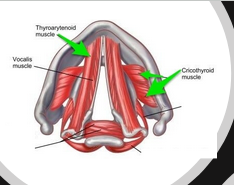
True or false? The TA and CT muscles are not active at all times.
FALSCH!!!!!!!!!!!! >:(((((((
both muscles are active AT ALL TIMES
antagonism between TA and CT allows for pitch control
remember the dance???
Describe TA dominant voice production.
chest voice
heavy mechanism
belt
Describe CT dominant voice production.
head voice
light mechanism
cover
Okay back to anatomy. Intrinsic muscles. What muscles are responsible for abduction (OPENING) of the vocal folds?
the posterior cricoarytenoid muscle
the only muscle responsible for ABDUCTION
located in the back
fun fact: this muscle is active while we sleep because we’re not producing sound
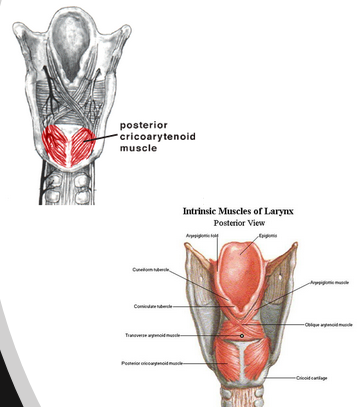
What muscles are responsible for adducting (CLOSING) the vocal folds?
lateral cricoarytenoids (rotates arytenoids for adduction; located on the sides)
interarytenoid muscles (transverse arytenoid; oblique arytenoid)

Vocal fold oscillation. What is the Myoelastic-Aerodynamic Model? Describe it and its relation to the Bernoulli Effect.
Bernoulli Effect: velocity and Pressure are inversely proportional
the vocal folds are closed, and the exhalation process starts
air is gathered underneath the folds
when the air reaches the pressure required for phonation, the vocal folds are pushed apart a little bit
as soon as there is a slit, air wants to escape quickly
the high velocity causes low pressure between the vocal folds, creating a vacuum effect that brings the vocal folds together
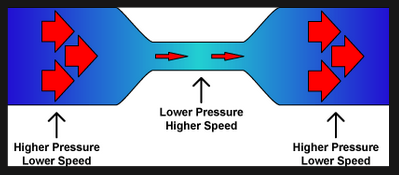
What are the three types of onsets? Describe them.
glottal: hard attack; muscular activity precedes airflow
aspirate: breathy/soft; airflow precedes muscular activity
balanced: both muscular activity and airflow starts at the same time
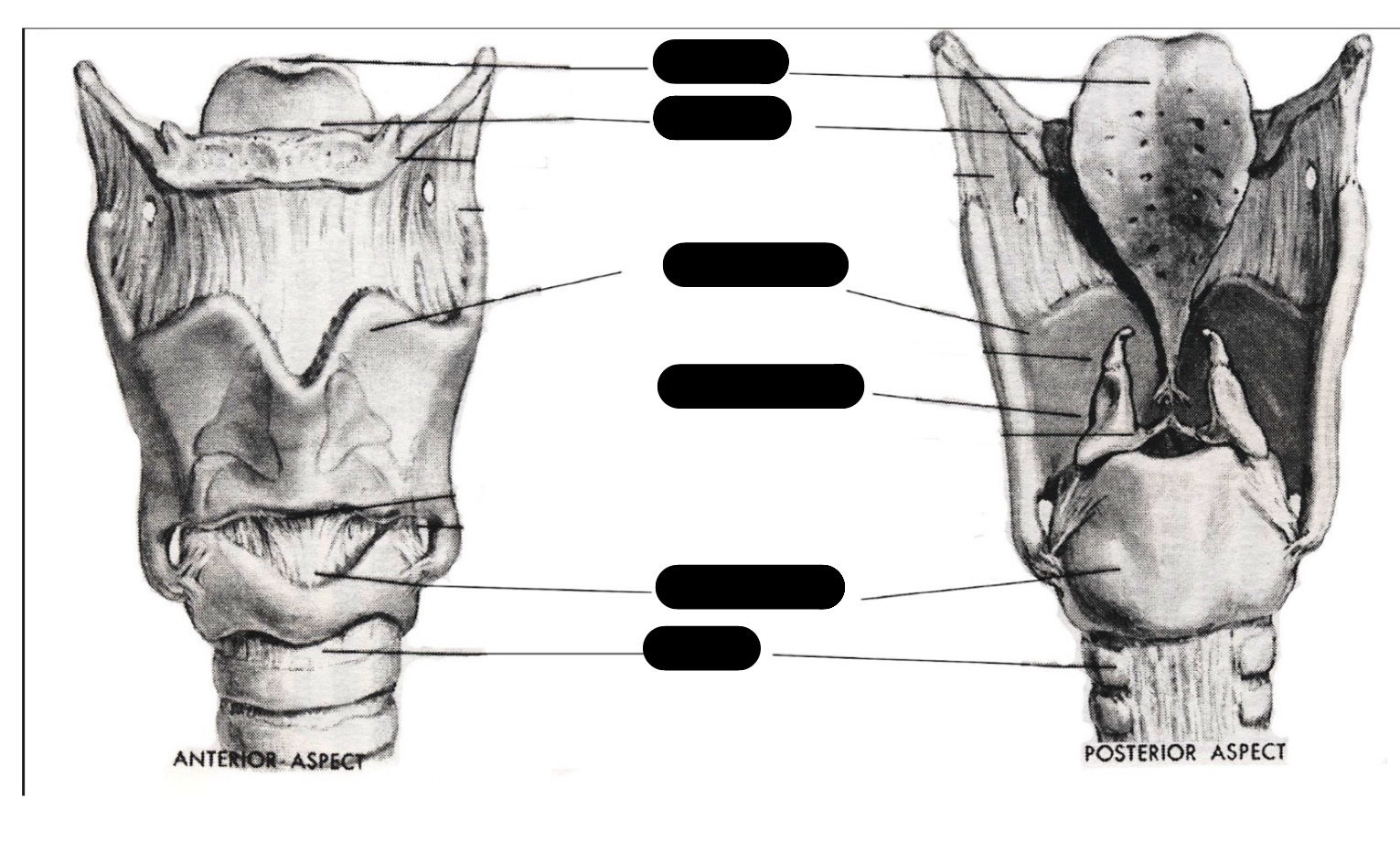
Label
Btw these labeling flashcards are not a trick, there are repeated things to label from multiple views
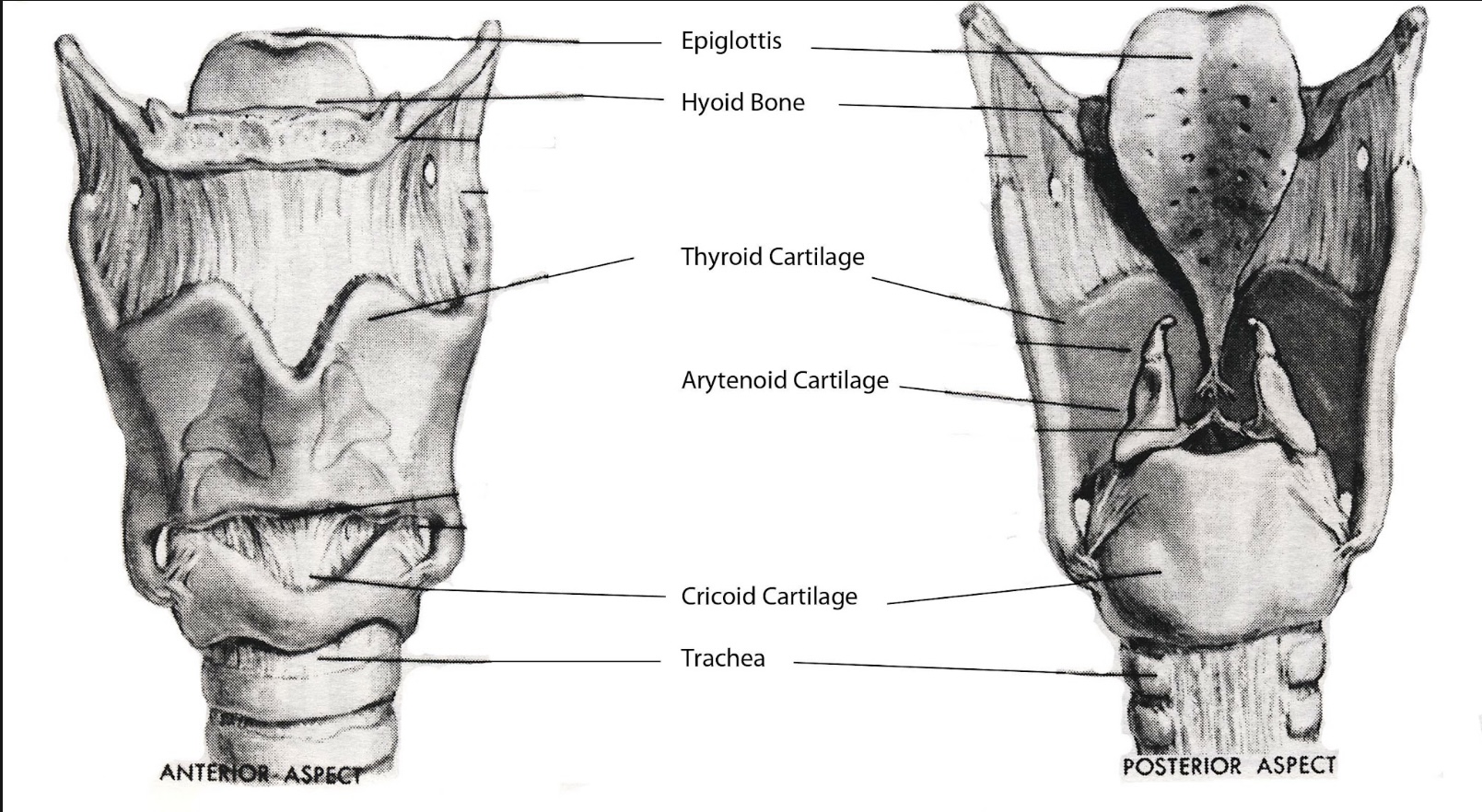
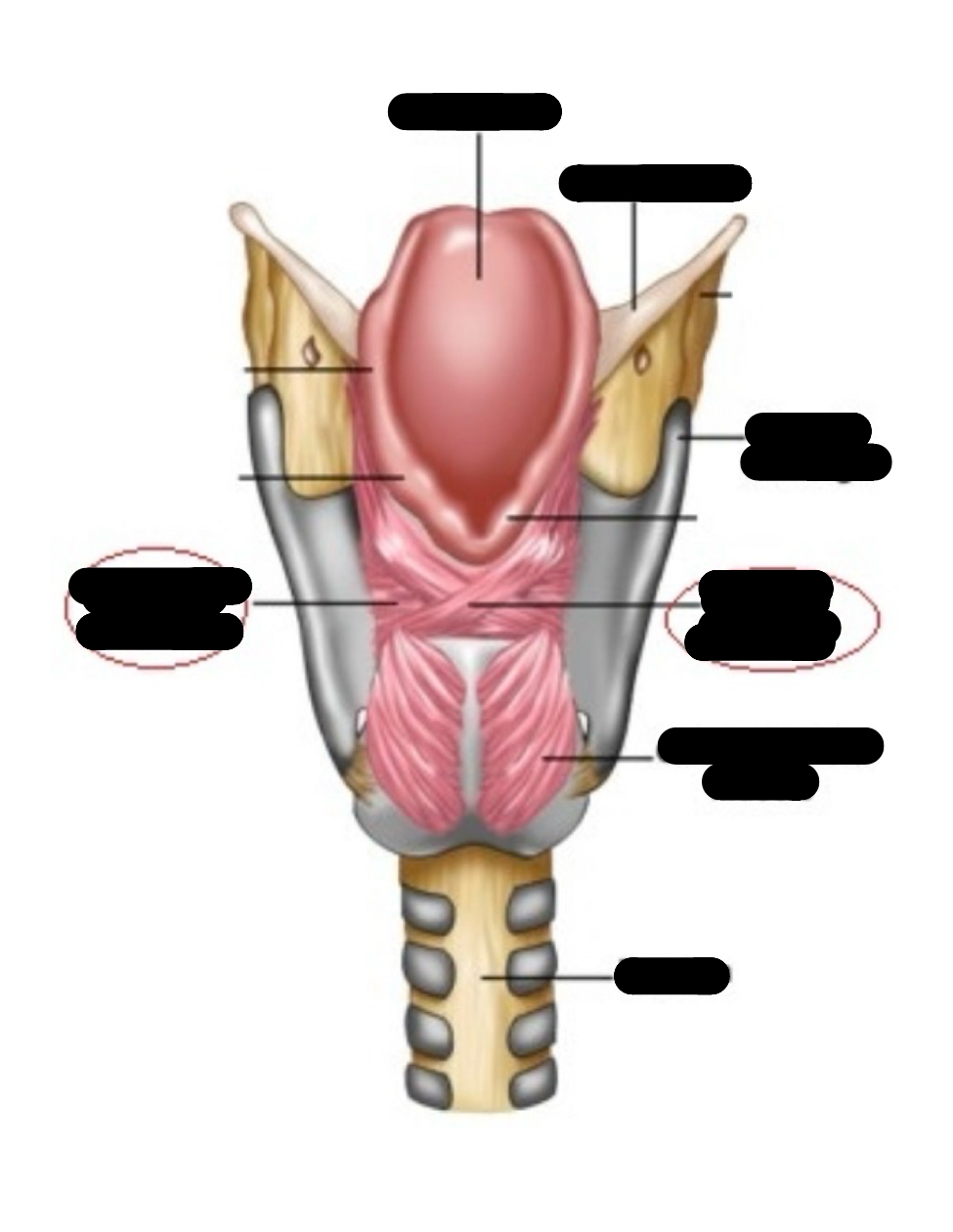
Label

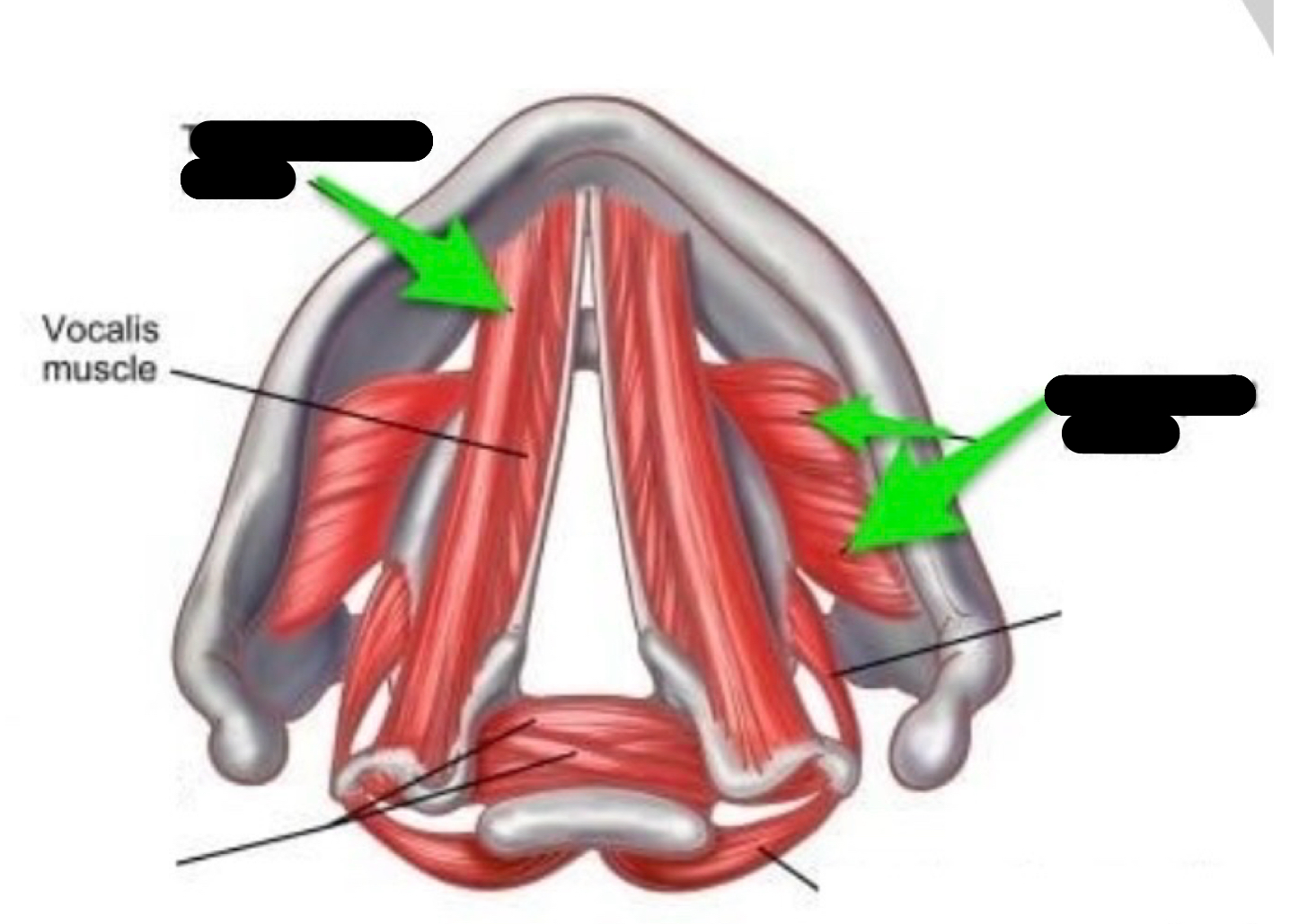
Label
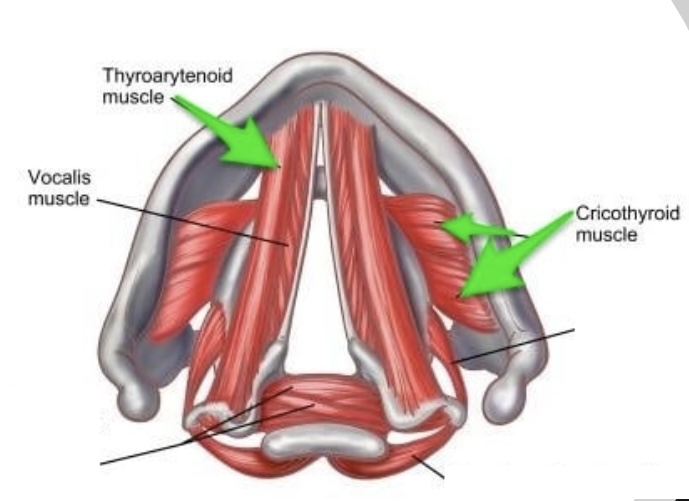
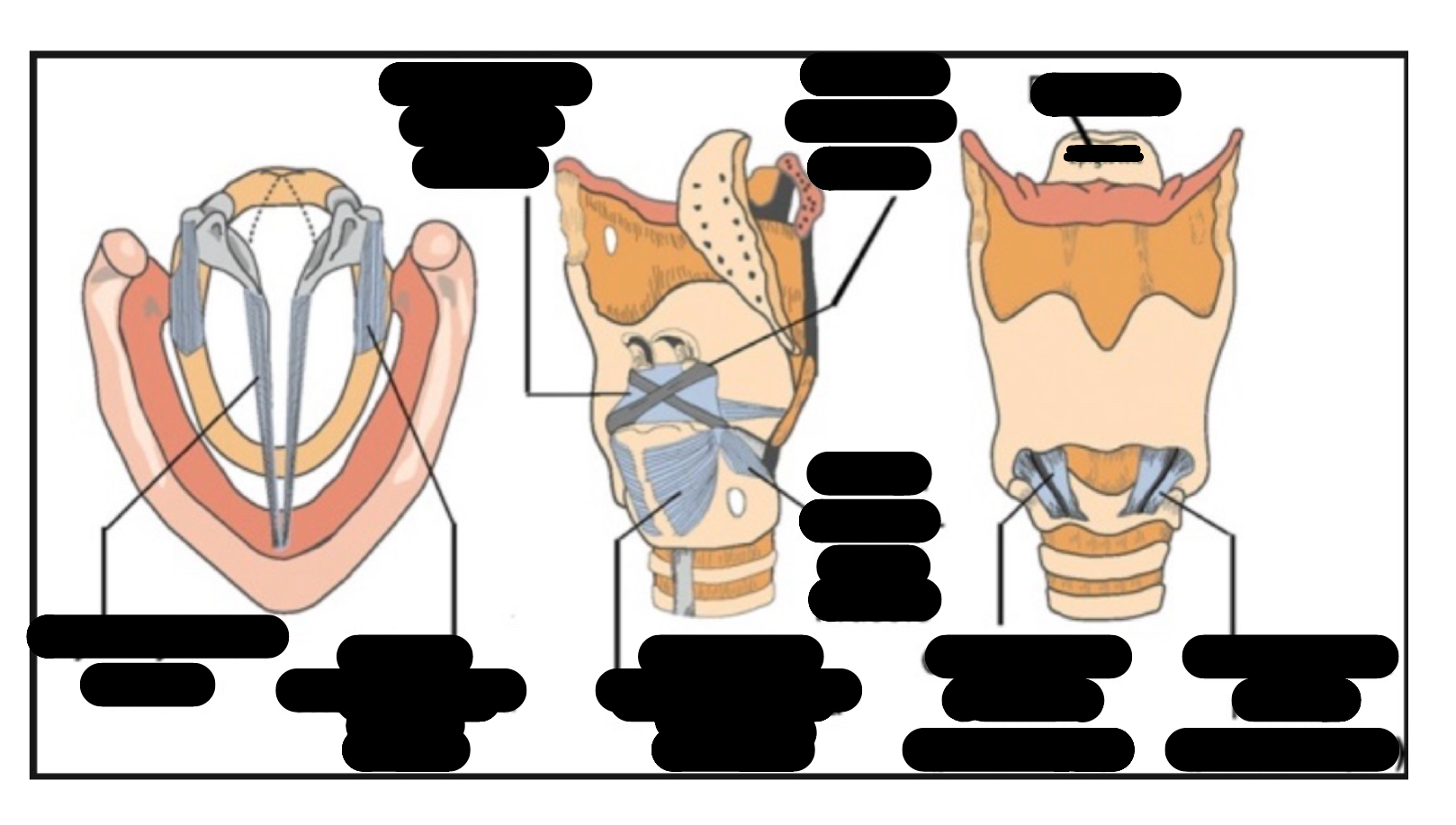
Label. This one’s tough, lots of stuff
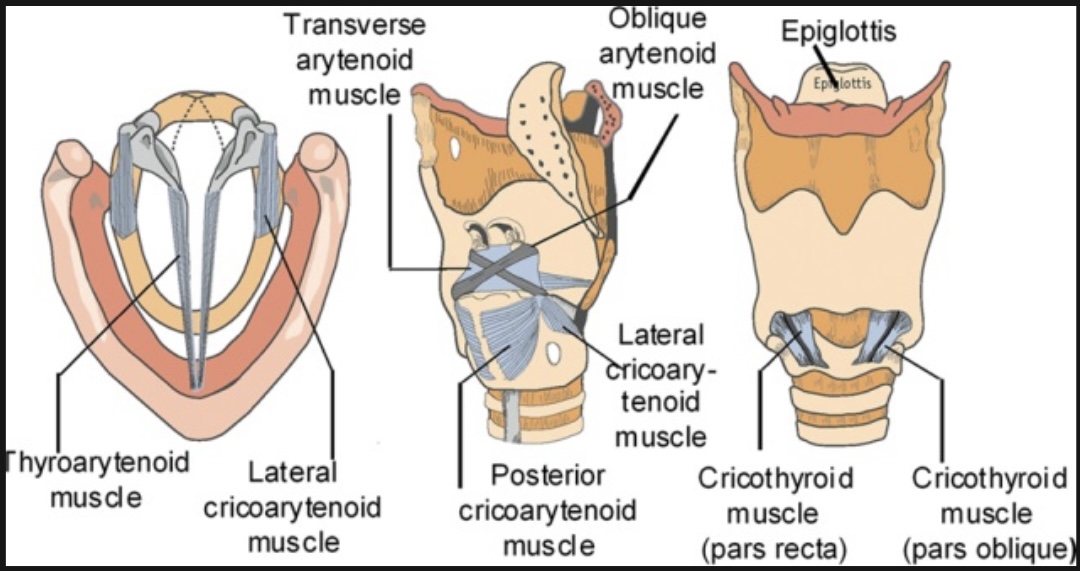
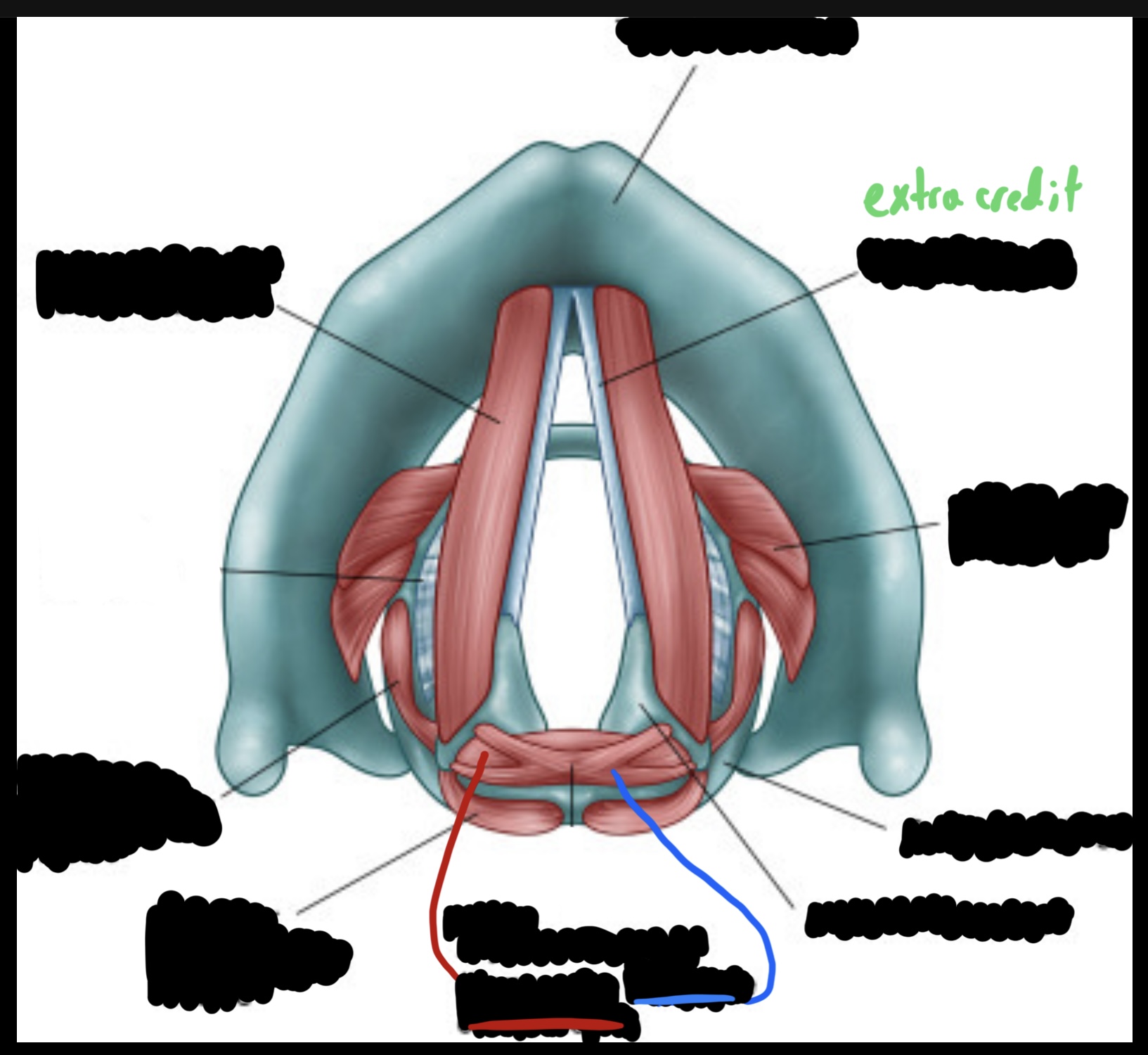
How about another one? (Hint: muscles and cartilages)

After all this stuff, could you verbally label a model larynx? Describe the process of phonation from the literal onset.
Here’s your word bank:
Hyoid B.
Thyroid C.
Arytenoid C.
Cricoid C.
Trachea
Epiglottis
Thyroarytenoid M.
Cricothyroid M.
Posterior Cricoarytenoid M.
Lateral Cricoarytenoid M.
Interarytenoid M.
Adduction
Vocal Folds
Theories of Vocal Fold Oscillation
Bernoulli Effect
Mucosal wave
Well?
